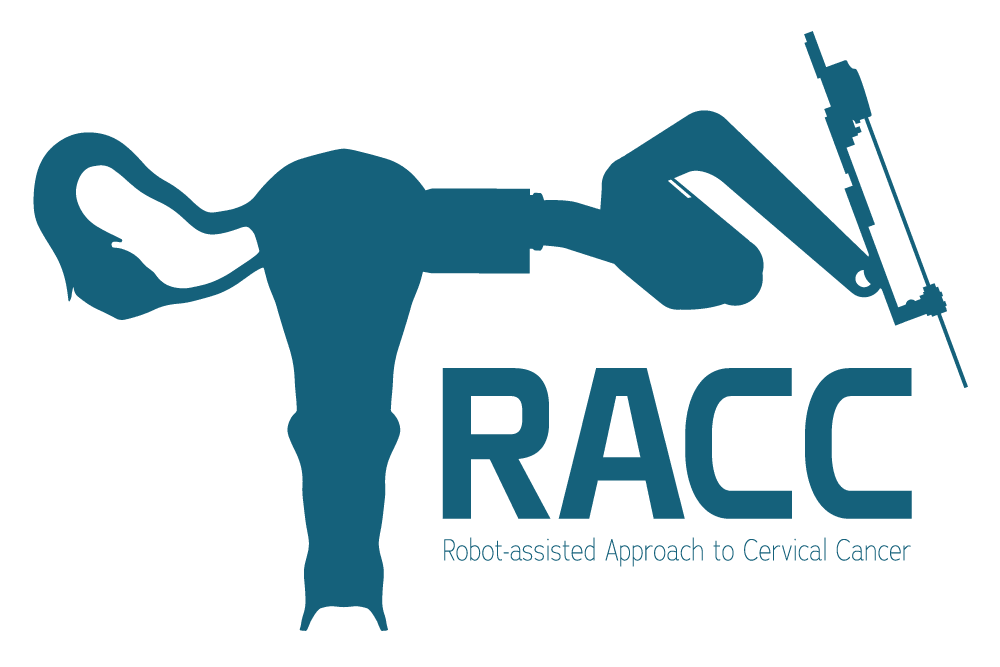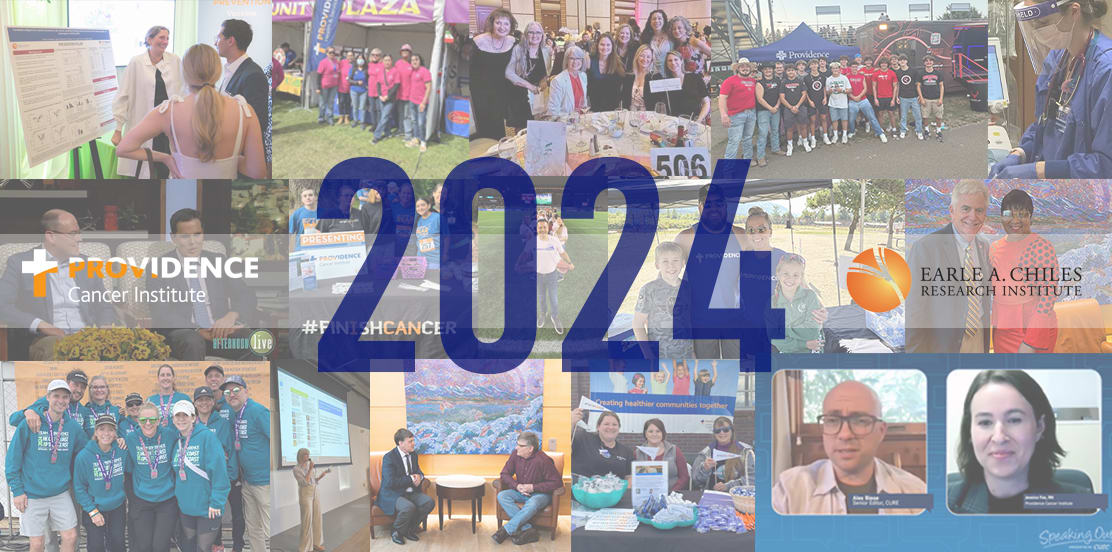Targeting cancer cells: Two studies take different approaches

June 2024
Cancer is a formidable disease to cure. The complexity and adaptability of cancer cells, combined with the challenges in early detection and treatment side effects mean researchers must cast a wide net to find effective and safe therapies.
The two clinical trials featured here are evaluating two different types of medications that target cancer cells in different ways, while sparing healthy cells. One study is designed to treat epithelial ovarian cancer and the other is for people with advanced breast cancer. Read on to find out how these studies differ and why they are important contributions to the ongoing effort to cure cancer.
Novel treatment targets FOLR
Despite advances in the longevity of patients with ovarian cancer, treating recurrent epithelial ovarian cancer remains a challenge, particularly when relapse occurs within six months of primary therapy. This condition, known as platinum-resistant ovarian cancer (PROC), presents a significant hurdle in oncology.
Recently, folate receptor alpha (FOLR) has emerged as a novel target for ovarian cancer treatment. Luveltamab tazevibulin (luvelta), a promising new therapy targeting FOLR, has garnered fast track designation from the Food and Drug Administration.
Building on encouraging early clinical trial results, a pivotal new study, REFRaME-01, has been launched to further investigate the efficacy and safety of luvelta. This global, randomized trial will compare luvelta to the investigator’s choice of chemotherapy in patients with recurrent PROC expressing FOLR1. The study’s primary objectives are to assess progression-free survival and overall response rate, evaluated according to RECIST v1.1 criteria. Secondary endpoints include overall survival, duration of response and quality of life, aiming to provide a comprehensive understanding of luvelta's potential benefits to patients.
How does luvelta work?
Luvelta is an antibody-drug conjugate specifically designed to target FOLR1. It features a stable, cleavable linker and a potent “warhead” known as 3-aminophenyl hemiasterlin. A cleavable linker is a crucial component in the design of antibody drug conjugates. It serves as the connection between the antibody and the drug (warhead) that is delivered to the cancer cells.
The combination of a cleavable linker and warhead aims to induce both cytotoxic and immunologic cell death, making it a versatile treatment option for various cancers with different levels of FOLR1 expression.
Early results showed promise
In early clinical trials, luvelta demonstrated notable antitumor activity in women with recurrent ovarian cancer who had tumors expressing FOLR1 at a level of 25% or more. This specific cutoff is significant as it represents about 80% of patients with PROC.
A phase I study revealed the overall response rate was 37.5%, with a median duration of response of 5.5 months and median progression-free survival of 6.1 months. Notably, patients receiving a higher dose of luvelta showed a better response rate of 43.8% compared to 31.3% in those receiving a lower dose. The treatment was generally well-tolerated.
Study design
The study is divided into two parts:
- Part 1 (Phase 2): This phase focuses on optimizing the dose of luvelta. Data from this phase will help determine the optimal dosing regimen.
- Part 2 (Phase 3): Approximately 550 patients will be enrolled and randomized to either the optimal dose of luvelta determined from Part 1 or the investigator’s choice of chemotherapy, which could include gemcitabine, paclitaxel, pegylated liposomal doxorubicin or topotecan.
REFRaME-01 is currently enrolling patients at Providence Cancer Institute. Christopher Darus, M.D., MS, medical director, Providence Gynecologic Oncology Program, is the principal investigator.
For more detailed information about the study go to:
Study compares ARV-471 and fulvestrant for advanced breast cancer
A new treatment is being evaluated in a study that could hold promise for patients with advanced breast cancer. The treatment, called ARV-471, works by breaking down estrogen receptors in cancer cells. These receptors help some breast cancers grow, so eradicating them can slow down or stop the cancer. Unlike other treatments that indirectly cause the breakdown of these receptors, ARV-471 directly targets them.
The study, known as VERITAC-2, is currently enrolling patients at Providence Cancer Institute. Alison Conlin, M.D., MPH, medical director, Providence Breast Cancer Medical Program and High-Risk Breast Cancer Clinic, is the principal investigator.
ARV-471 shown to be well tolerated
In earlier studies, ARV-471 was given to patients with advanced breast cancer that had not responded well to previous treatments. ARV-471 was well tolerated by patients and showed promising results. Based on these findings, the dose of 200 mg taken once a day was chosen for further testing.
The new phase III study will compare the safety and efficacy of ARV-471 to an existing therapy called fulvestrant, a selective estrogen receptor degrader that works by binding to, blocking and degrading estrogen receptors. In turn, this stops estrogen signaling through the estrogen receptors in the body, which can help slow or stop cancer from spreading.
“We like to call this ‘degradation by design,’” said Dr. Conlin.
VERITAC-2 will enroll patients who have advanced breast cancer with specific characteristics (ER+/HER2-) and have already tried other treatments that didn’t work. Patients must have breast cancer that has spread or come back and can't be treated with surgery or radiation. They must have tried one previous combination therapy with a CDK4/6 inhibitor and endocrine therapy (ET) and possibly one other ET, and their cancer must have gotten worse during or after their last treatment.
About 560 patients will participate in the study. They will be randomly assigned to take either 200 mg of ARV-471 orally on a daily basis or fulvestrant given as an injection on days one and 15. The main goal of the study is to see how long patients live without their cancer getting worse. Other goals include overall survival, how well the treatment works against the tumor, safety and quality of life.
Get more details about the study.
Refer a patient
To refer a patient to this clinical trial, contact our clinical research office:
- Call 503-215-2614
- Send an email
New research studies are added frequently. To see more clinical studies, visit:
- Studies for breast cancer
- Studies for gynecologic cancers
- All cancer studies at Providence Cancer Institute
Providence is a center of excellence for precision immuno-oncology and cellular therapy
Since 1993, cancer research has been the primary focus of the Earle A. Chiles Research Institute, the research arm of Providence Cancer Institute of Oregon. Under the leadership of Walter J. Urba, M.D., Ph.D., our team of physicians and scientists work together to improve cancer treatment methods – joining lab research and clinical trials with medical practice.
Our main area of research is cancer immunotherapy, and with the advancements in genomic sequencing we are bringing together the power of immunotherapy and personalized medicine to accelerate leading-edge research and groundbreaking discoveries for patients with cancer.



